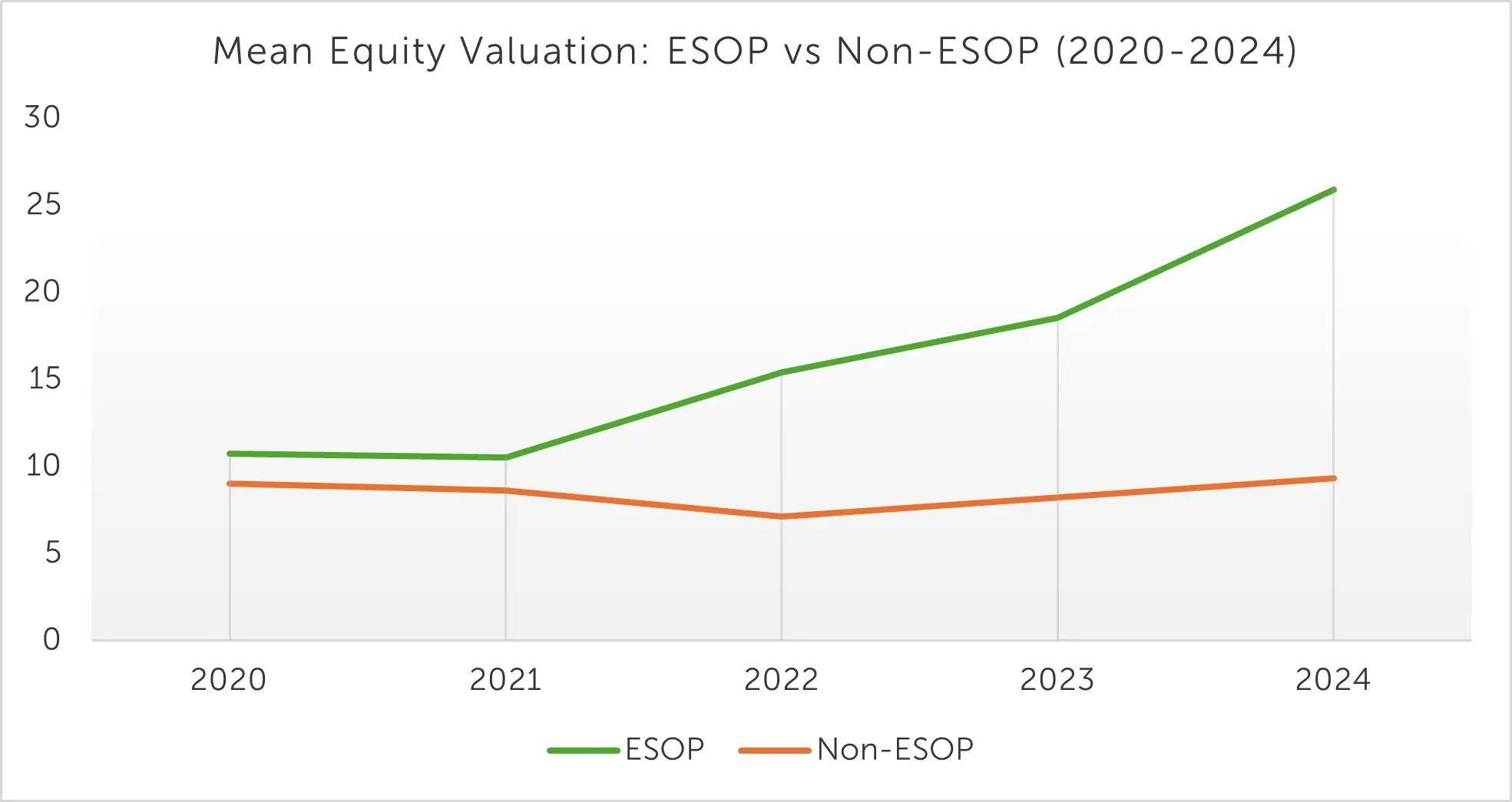Employee Ownership
Understanding ESOPs – Register to our FREE webinar!
Understanding ESOPs – Register to our FREE webinar!
Employee Ownership

You’ve likely heard of the benefits of an Employee Share Scheme (ESS) and Employee Stock Ownership Plan (ESOP), two of the most common terms in employee ownership.
Some accountants or consultants use ESOP and ESS interchangeably and have many similarities. Both share the common goal of aligning employee interests with the company’s success. Employee ownership schemes create a sense of agency and investment in the company for staff, creating greater incentives for participation in the company’s financial success.
However, these employee ownership models differ significantly in structure, purpose, implementation, and tax implications. So, let’s delve into the distinctions between ESS and ESOP to help your team better understand each’s unique elements and benefits.
Employee Share Schemes, also called Employee Share Purchase Plans (ESPPs), are mechanisms through which employees can acquire shares or options to purchase shares in their employer company.
A simple ESS is arguably the easiest and quickest to set up. For a smaller company, it can be ready to go in just a few weeks.
Employee Stock Ownership Plans (ESOPs) are comprehensive programs through which employees become beneficial owners of the company by allocating shares held in trust. A vesting period usually applies; a set length of time that an employee must remain with the company before they can exercise their options (i.e. buy the shares).
ESOPs are designed to create a sense of ownership and align employee interests with company performance. They are also commonly used as a retirement benefit.
Imagine Sarah, a mid-weight software engineer working for a tech firm, KoderKraft Pty Ltd, who implements an Employee Share Scheme (ESS) to motivate and reward its employees. They set up the ESS for participation with any salaried employees and contractors interested in being involved.
Consider James, the lead researcher at InovaRabo Pty Ltd. The private, family-owned company opts for an Employee Share Option Plan (ESOP) to align senior leadership interests with the company’s success. The ESOP also provides a financial incentive for loyalty in an industry where competing firms often poach key talent.
| ESS | ESOP | |
| Ownership Structure | Employees typically hold individual shares or options. | Ownership is held collectively through a trust, with employees becoming beneficial owners over time. |
| Accessibility | Open to a broad range of employees, often including all eligible staff. | May be limited to specific groups or used as a retirement benefit. |
| Financial benefits | Provides immediate financial benefits through discounted share purchases. | Offers long-term financial security, primarily as a retirement benefit. |
| Longevity and commitment | Emphasises immediate ownership and participation. | Encourages long-term commitment and ownership. |
Tax treatment can vary, and it’s essential to understand the specifics under Australian tax laws that differ between Employee Share Schemes (ESS) and Employee Stock Ownership Plans (ESOP) — for example, where Capital Gains Tax (CGT) may be applicable. Companies must comply with all relevant legislation, including the Corporations Act 2001 and the Income Tax Assessment Act 1997.
There are three main ways that tax may apply to the shareholder (employee):
The Australian Taxation Office (ATO) provides guidelines and regulations related to employee share schemes. Seeking advice from tax professionals or consulting with the ATO can help ensure accurate compliance with Australian tax regulations.
Companies should also provide employees with clear and comprehensive information about the tax implications of participating in ESS and ESOP.
Your Succession Plus partner can help with presentations and literature to ensure complete plan comprehension, including understanding Tax-Deferred Contributions and Tax-Advantaged Distributions.
Employee Share Plans became more popular for Australian businesses with the 2015 Tax Reforms and Startup Concession Scheme. The 2022 amendments mean an employee leaving the business is no longer an automatic tax trigger. Employees are only taxed on their options where they have received an actual (realised) benefit sufficient to cover the cost of that tax.
Unlisted companies also have the flexibility to attribute up to $40,000 annually for equity grants involving employee contributions, up from the previous limit of $5,000. The adjustment allows unlisted companies to structure more competitive equity packages, making them more appealing to potential talent and enabling them to compete better with listed companies.
To be eligible for the Startup Concession Scheme, the company creating the ESS must not be older than ten years (since incorporation), not be listed on the ASX, and not primarily profit from holding, selling, or buying investments, including securities and shares. Talk to your Succession Plus partner for more information on this scheme.
In summary, Employee Share Schemes (ESS) and Employee Stock Ownership Plans (ESOP) represent distinct approaches to employee ownership. Both can be ways to offer performance-based share options for my employees. ESS programs focus on immediate participation and financial benefits, while ESOPs offer long-term ownership and retirement security.
The choice between these two depends on a company’s goals, culture, and the level of employee ownership desired. Regardless of the path chosen, ESS and ESOP can be powerful tools for aligning employee interests with company success and fostering a sense of ownership among your workforce.

Dr Craig West
 1 min read
1 min read
Oct 29, 2025 | Employee Ownership Business Value Acceleration
The Value of Ownership: ESOP Companies Achieve Strong Equity Growth
.webp) 2 min read
2 min read
Sep 26, 2025 | Employee Ownership Business Value Acceleration
OwnerShift+™: Build Culture & Accelerate Business Value
 3 min read
3 min read
Sep 8, 2025 | Employee Ownership Succession Planning Business Value Acceleration
The 3x3 Framework | Business Growth & Succession Insights
 3 min read
3 min read
Aug 25, 2025 | Employee Ownership Business Value Acceleration
Smart ESOP Strategies Before Selling Your Busines